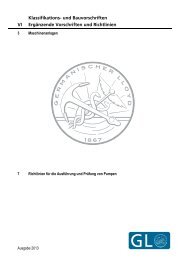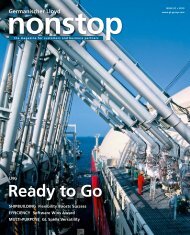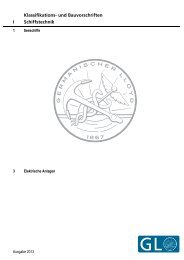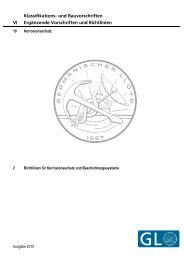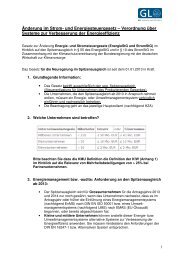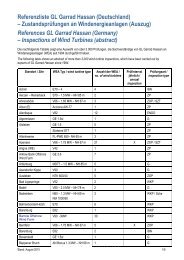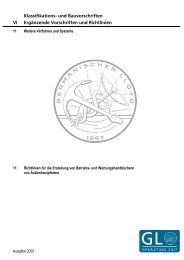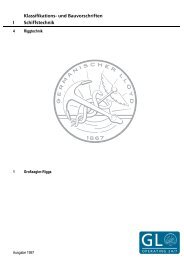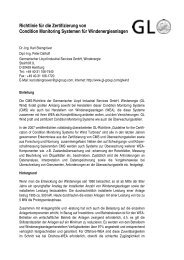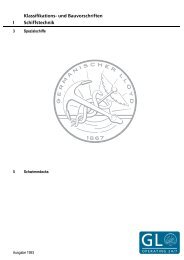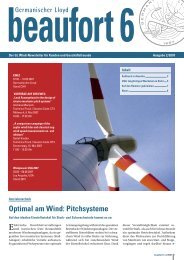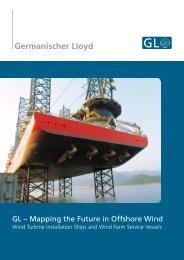(IV-7-3) General Safety
(IV-7-3) General Safety
(IV-7-3) General Safety
You also want an ePaper? Increase the reach of your titles
YUMPU automatically turns print PDFs into web optimized ePapers that Google loves.
Rules <strong>IV</strong> Industrial Services<br />
Part 7 Offshore Substations<br />
Chapter 3 <strong>General</strong> <strong>Safety</strong><br />
Section 6<br />
Fire <strong>Safety</strong> - <strong>General</strong><br />
• general arrangement with all levels of the installation/unit indicating the purpose of each area or<br />
room and the arrangements of machinery and equipment<br />
• categories of fire sections horizontally and vertically including typical details of each category<br />
D<br />
Definitions<br />
D.1 Non-combustible material<br />
Non-combustible material means a material which neither burns nor gives off flammable vapours insufficient<br />
quantity for self-ignition when heated to approximately 750 °C, this being determined to the satisfaction<br />
of GL by an established test procedure. Reference is made to the Fire Test Procedure Code, Annex<br />
1, Part 1 adopted by IMO by Resolution MSC.307(88). Any other material is a combustible material.<br />
D.2 Standard fire test<br />
A standard fire test is a test in which specimens of the relevant bulkheads or decks are exposed, in a test<br />
furnace, to temperatures corresponding approximately to the standard time-temperature curve.<br />
Reference is made to the 2010 Fire Test Procedure Code (FTP Code).<br />
D.3 "A" class divisions<br />
"A" class divisions are divisions formed by bulkheads and decks which comply with the following requirements.<br />
D.3.1<br />
D.3.2<br />
"A" class divisions shall be constructed of steel or other equivalent material.<br />
"A" class divisions shall be suitably stiffened.<br />
D.3.3 "A" class divisions shall be so constructed as to be capable of preventing the passage of<br />
smoke and flames to the end of the one-hour standard fire test.<br />
D.3.4 "A" class divisions shall be insulated with approved non-combustible materials such that the<br />
average temperature of the unexposed side will not rise more than 140 °C as per FTP Code above the<br />
original temperature, nor will the temperature, at any one point, including any joint, rise more than 180 °C<br />
above the original temperature within the time listed below:<br />
Class "A-60" 60 minutes<br />
Class "A-30" 30 minutes<br />
Class "A-15" 15 minutes<br />
Class "A-0" 0 minutes<br />
D.4 "B" class divisions<br />
"B" class divisions are divisions formed by bulkheads, decks, ceilings or linings which comply with the<br />
following requirements.<br />
D.4.1 "B" class divisions shall be so constructed as to be capable of preventing the passage of<br />
flames until the end of the first half of the standard fire test. Reference is made to the 2010 Fire Test Procedure<br />
Code.<br />
D.4.2 "B" class divisions shall have an insulation value such that the average temperature of the<br />
unexposed side will not rise more than 140 °C above the original temperature, nor will the temperature at<br />
any one point, including any joint, rise more than 225 °C above the original temperature, within the time<br />
listed below:<br />
Class "B-15" 15 minutes<br />
Class "B-0" 0 minutes<br />
Edition 2013 Germanischer Lloyd Page 6–3




